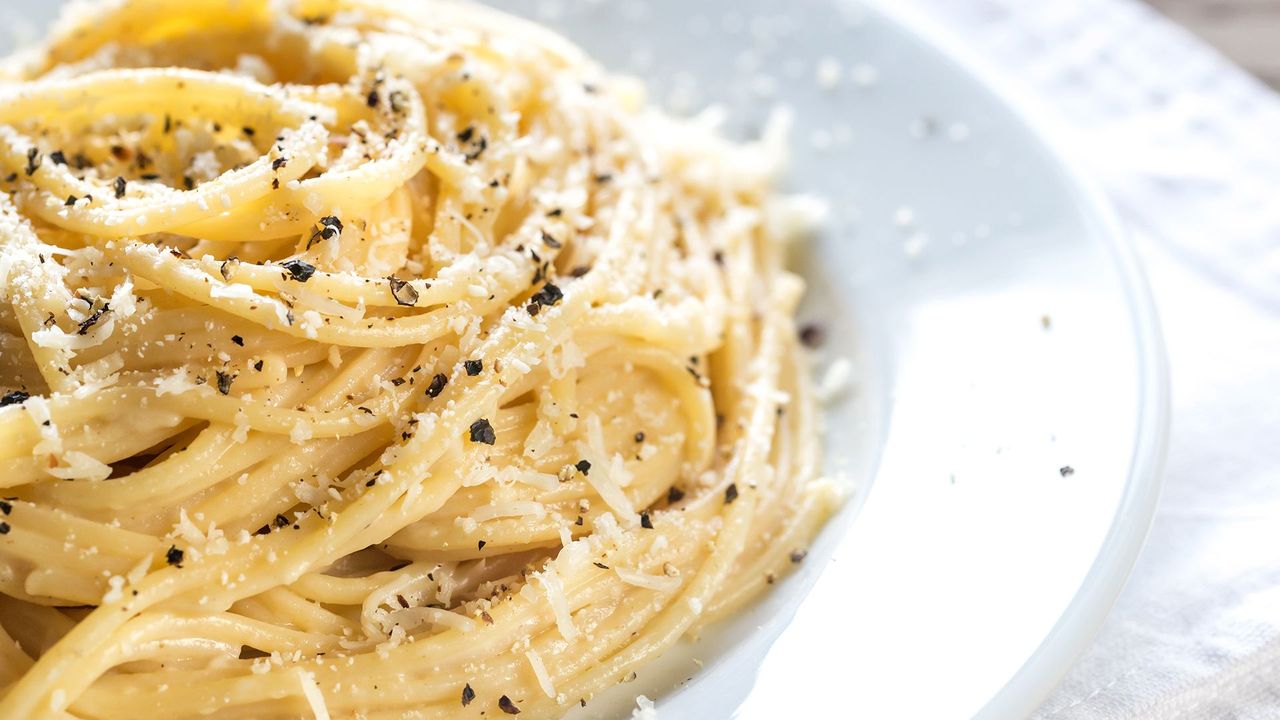When pasta sticks, most people grab more water, more cheese, or sheer hope. But when eight Italian physicists living abroad found themselves defeated by Cacio e Pepe, they reached instead for thermodynamics. The result: a peer-reviewed paper, a new way to cook Rome’s most famously temperamental pasta dish, and, ultimately, an Ig Nobel Prize.
The award was given on Thursday evening in Boston, celebrating a project born not in a kitchen in Rome, but in the scientific laboratories of Dresden, inside the Max Planck Institute for the Physics of Complex Systems (MPI-PKS). There, a team made up entirely of Italian scientists working in Dresden turned a personal cooking frustration into research that “first makes you laugh, then makes you think.”
From failed dinners to physics diagrams
Cacio e Pepe (“cheese and pepper”) has just three main ingredients – Pecorino Romano, black pepper, and pasta – yet countless ways to go wrong. The sauce often curdles, clumping into rubbery strands instead of coating the pasta in cream.
Determined to understand why, physicists including Dr. Ivan Di Terlizzi and Fabrizio Olmeda applied their expertise in phase separation and statistical physics to the dinner table. They discovered that the problem lies in the behavior of cheese proteins above 65 °C, which denature and clump unless stabilized by starch. By constructing a phase diagram of the sauce, the team identified the precise balance of starch, water, and temperature that guarantees a smooth, stable emulsion every time.
In a delightful blend of culinary tradition and rigorous science, researchers from the Max Planck Institute for the Physics of Complex Systems in Dresden, along with collaborators from Barcelona, Padova, and Vienna, have developed a foolproof scientifically optimized method to prepare the classic Roman dish.
“
We study phase separation in the lab,” explains
Dr. Ivan Di Terlizzi. “
We thought why not apply it to our dinner?”
Cacio e Pepe, literally "cheese and pepper", is notorious for its deceptively simple ingredients and the maddening tendency of the sauce to clump. By studying how cheese proteins interact with water and heat, the researchers created a phase diagram to identify conditions under which the sauce remains smooth and creamy. The secret lies in controlling the concentration of starch and temperature.
A Recipe that Won a Prize
Their publication, “Phase behavior of Cacio e Pepe sauce” (Physics of Fluids 37, 044122, 2025), outlines the formula:
- Pecorino Romano: 160 g
- Pasta: 240 g (ideally tonnarelli)
- Starch gel: about 4 g starch per 160 g cheese, prepared with water
- Black pepper: freshly ground
By mixing the cheese with the starch gel at low temperature, the proteins remain dispersed and creamy,
transforming what was once a culinary gamble into reproducible perfection.
This insight – both humorous and rigorous – earned the Dresden-based Italian team
the Ig Nobel Prize in Physics 2025.
Curious about the full scientific details? Please refer to
G. Bartolucci et al. "Phase behavior of Cacio e Pepe sauce", Physics of Fluids 37, 044122 (2025).